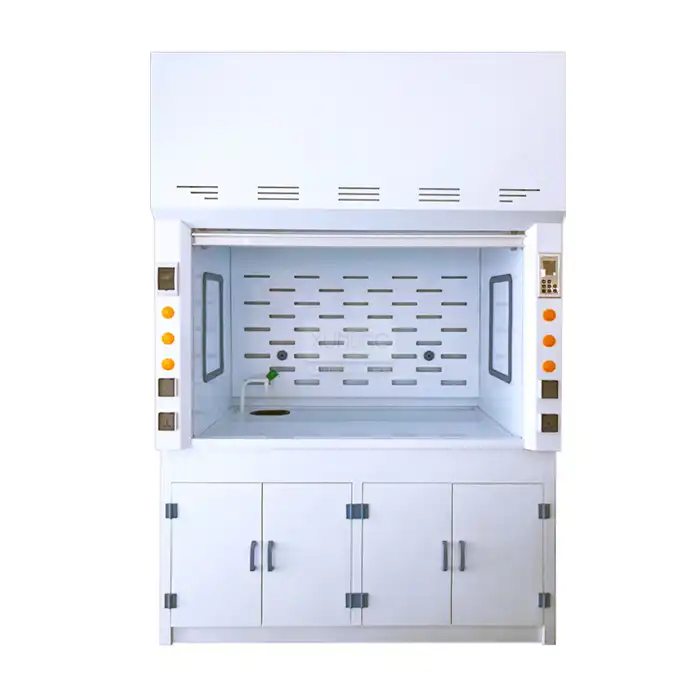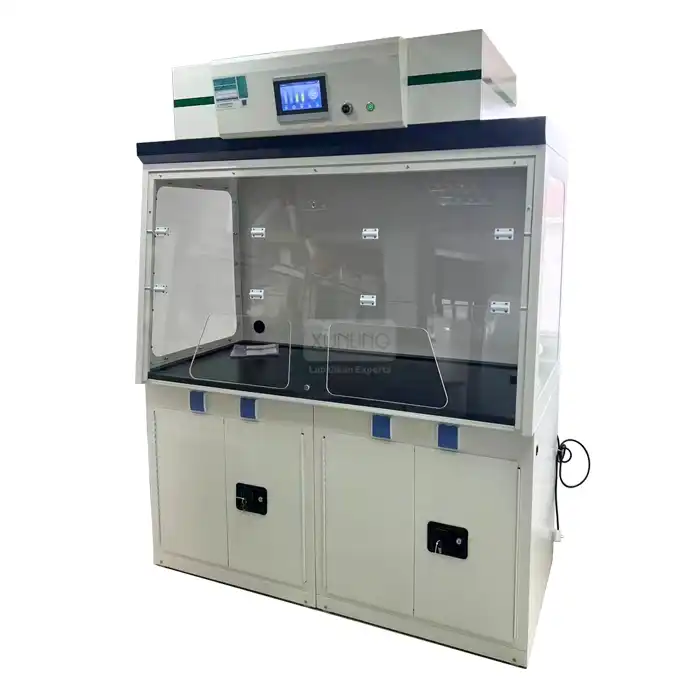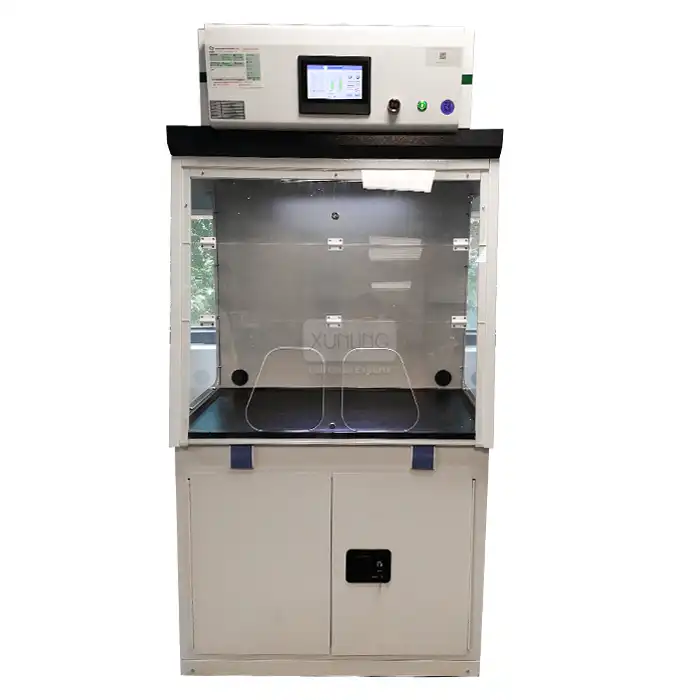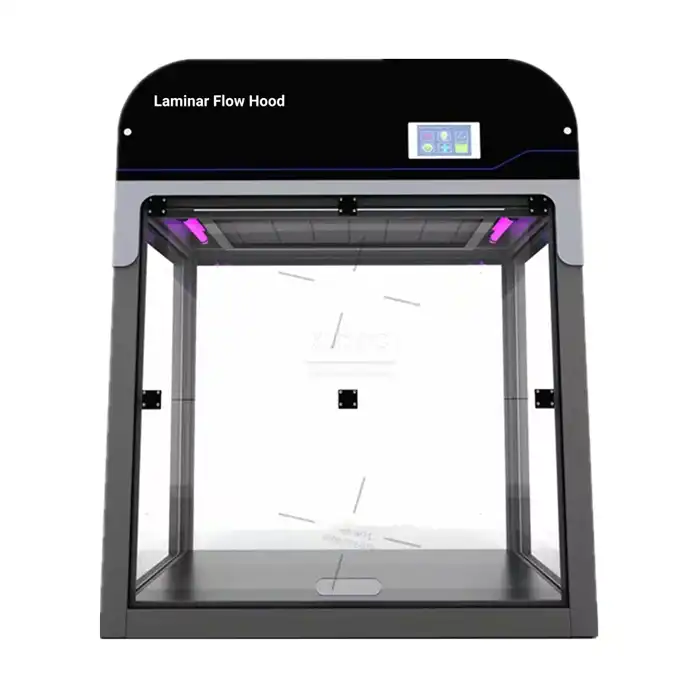
How a Class II A2 Biological Safety Cabinet Enhances Workflow and Safety?
2025-09-08 10:46:33
In modern laboratory environments, maintaining the highest standards of safety and efficiency is paramount to successful research and testing operations. The integration of advanced containment systems has revolutionized how laboratories approach microbiological work, cell culture, and sterile pharmacy compounding. Among these innovations, the Class II A2 Biological Safety Cabinet stands as a cornerstone technology that simultaneously addresses personnel protection, product integrity, and environmental safety while optimizing laboratory workflow processes. A Class II A2 Biological Safety Cabinet represents a sophisticated engineering solution that enhances laboratory workflow and safety through its tri-level protection system, combining inward airflow for personnel safety, downward HEPA-filtered laminar flow for product protection, and filtered exhaust for environmental containment. This advanced cabinet maintains precise airflow dynamics with minimum average inflow velocity of 100 fpm, while its dual HEPA filtration system ensures 99.995% efficiency at 0.3μm particles. The cabinet's ergonomic design and automated control systems streamline laboratory operations, reducing contamination risks and improving research efficiency across biosafety levels 1-4 applications.
Advanced Airflow Engineering for Enhanced Laboratory Protection
Dual-Direction Airflow System Design
The Class II A2 Biological Safety Cabinet employs a sophisticated dual-direction airflow system that represents the pinnacle of modern laboratory containment technology. This engineering marvel creates a protective barrier through carefully orchestrated air movements that serve multiple protective functions simultaneously. The inward airflow, maintained at a minimum velocity of 100 feet per minute through the sash opening, creates an invisible curtain that prevents potentially hazardous materials from escaping the work area and contaminating the surrounding laboratory environment. This protective mechanism is complemented by the downward laminar airflow that bathes the work surface in sterile, HEPA-filtered air, ensuring that sensitive materials remain uncontaminated throughout experimental procedures. The Class II A2 Biological Safety Cabinet achieves this through precise pressure differentials and strategically positioned air intake and exhaust points that maintain consistent airflow patterns regardless of minor environmental fluctuations. The cabinet's internal design incorporates plenum chambers and airflow straighteners that eliminate turbulence and ensure uniform air distribution across the entire work surface, creating an ideal microenvironment for sensitive biological work.
HEPA Filtration Technology and Efficiency Standards
The filtration system within a Class II A2 Biological Safety Cabinet represents state-of-the-art air purification technology, utilizing High-Efficiency Particulate Air (HEPA) filters that achieve remarkable particle removal efficiency. These filters demonstrate 99.995% efficiency at capturing particles as small as 0.3 micrometers, effectively removing bacteria, viruses, and other biological contaminants from both supply and exhaust air streams. The Class II A2 Biological Safety Cabinet incorporates dual HEPA filtration, with supply air filters ensuring sterile conditions within the work area and exhaust filters preventing environmental contamination. Advanced models may feature Ultra-Low Penetration Air (ULPA) filters that achieve even higher efficiency rates of 99.999% at 0.12 micrometers, providing enhanced protection for the most sensitive applications. The filtration system operates continuously during cabinet operation, maintaining ISO Class 5 cleanliness levels (equivalent to Class 100 cleanroom standards) within the work area. Regular filter monitoring and replacement protocols ensure sustained performance, with differential pressure gauges providing real-time feedback on filter condition and performance degradation over time.
Airflow Velocity Control and Monitoring Systems
Modern Class II A2 Biological Safety Cabinet systems incorporate sophisticated airflow monitoring and control mechanisms that ensure consistent performance throughout operational periods. The cabinet maintains precise descent wind speeds of 0.33 m/s and suction air speeds of 0.53 m/s, creating optimal conditions for both personnel and product protection. These velocity parameters are continuously monitored through integrated sensors that provide real-time feedback to the cabinet's control system, automatically adjusting fan speeds and airflow distribution to maintain specified parameters. The Class II A2 Biological Safety Cabinet features advanced microprocessor-controlled systems that compensate for filter loading, environmental pressure changes, and sash position variations, ensuring consistent protection levels regardless of operating conditions. Visual and audible alarm systems alert operators to any deviations from specified airflow parameters, preventing potentially hazardous situations and maintaining operational integrity. The monitoring system also incorporates data logging capabilities that record operational parameters for quality assurance documentation and regulatory compliance purposes, providing comprehensive records of cabinet performance and maintenance requirements.
Comprehensive Safety Features and Personnel Protection
Multi-Level Contamination Control Systems
The Class II A2 Biological Safety Cabinet implements a comprehensive multi-level contamination control strategy that addresses potential hazards from multiple angles simultaneously. The primary containment barrier consists of the carefully engineered airflow patterns that physically separate the operator from potentially hazardous materials, while secondary containment features include specialized construction materials and surface treatments that resist contamination and facilitate decontamination procedures. The cabinet's interior surfaces are manufactured from seamless stainless steel with coved corners that eliminate potential contamination harboring sites and enable thorough cleaning and disinfection. The Class II A2 Biological Safety Cabinet incorporates ultraviolet (UV) disinfection systems that provide additional surface sterilization capabilities, particularly effective during periods of non-use or between different experimental protocols. The work surface features integrated drainage systems and spill containment features that prevent liquid contamination from spreading beyond the immediate work area. Advanced models include automated decontamination cycles that combine UV exposure with controlled airflow patterns to ensure complete surface sterilization between uses, significantly reducing cross-contamination risks and enhancing overall laboratory safety protocols.
Ergonomic Design for Operator Safety and Comfort
The ergonomic design of a Class II A2 Biological Safety Cabinet prioritizes operator comfort and safety through carefully considered human factors engineering principles. The cabinet features adjustable sash heights that accommodate operators of different statures while maintaining optimal airflow characteristics and containment effectiveness. The work surface height and depth are optimized to reduce operator fatigue during extended work periods, with armrests and support surfaces positioned to minimize musculoskeletal stress and repetitive strain injuries. The Class II A2 Biological Safety Cabinet incorporates high-quality LED lighting systems that provide uniform illumination across the entire work surface, with light levels exceeding 900 lux to ensure excellent visibility for detailed laboratory procedures. The viewing window design maximizes visual access to the work area while maintaining structural integrity and containment effectiveness, with anti-reflective coatings that reduce eye strain and improve visual clarity. Control panels are positioned for intuitive access and operation, with clearly marked indicators and controls that enable rapid adjustment of cabinet parameters without compromising sterile technique or contamination control procedures.
Real-Time Safety Monitoring and Alert Systems
Advanced Class II A2 Biological Safety Cabinet systems incorporate comprehensive real-time monitoring capabilities that continuously assess multiple safety parameters and provide immediate feedback to operators and facility management systems. These monitoring systems track airflow velocities, filter differential pressures, sash positions, and internal environmental conditions, comparing actual performance against predetermined safety thresholds. The Class II A2 Biological Safety Cabinet features visual and audible alarm systems that immediately alert operators to any condition that could compromise safety or containment effectiveness, including airflow disruptions, filter saturation, or improper sash positioning. Advanced models integrate with laboratory information management systems (LIMS) and building automation systems, providing centralized monitoring and control capabilities that enable facility-wide safety management and compliance documentation. The monitoring system maintains detailed operational logs that document cabinet performance over time, providing valuable data for preventive maintenance scheduling and regulatory compliance reporting. Emergency shutdown procedures are integrated into the monitoring system, allowing for immediate cabinet isolation in the event of containment failure or other safety-critical situations, protecting both personnel and the surrounding laboratory environment from potential contamination exposure.
Operational Efficiency and Workflow Optimization
Streamlined Laboratory Procedures and Productivity Enhancement
The Class II A2 Biological Safety Cabinet significantly enhances laboratory productivity by providing a controlled environment that streamlines complex experimental procedures and reduces the time required for setup and cleanup operations. The cabinet's spacious work area, available in multiple sizes including 1000mm, 1300mm, and 1600mm widths, accommodates various experimental configurations and equipment arrangements while maintaining optimal airflow characteristics and containment effectiveness. The Class II A2 Biological Safety Cabinet features intuitive control systems that allow operators to quickly adjust lighting, airflow, and other parameters without interrupting experimental procedures or compromising sterile technique. The cabinet's design facilitates efficient material transfer through strategically positioned access points and pass-through capabilities that minimize air disruption and contamination risks. Integrated storage solutions and accessory mounting systems enable operators to organize essential tools and materials within easy reach, reducing movement requirements and enhancing experimental efficiency. The cabinet's low noise operation, typically below 65 decibels, creates a comfortable working environment that supports concentration and reduces operator fatigue during extended experimental sessions.
Advanced Automation and Digital Integration Capabilities
Modern Class II A2 Biological Safety Cabinet systems incorporate sophisticated automation features that reduce manual intervention requirements and enhance operational consistency across different users and experimental protocols. These automated systems include programmable airflow cycles, timed UV sterilization sequences, and intelligent filter monitoring that optimize cabinet performance while minimizing operator workload. The Class II A2 Biological Safety Cabinet features digital control interfaces that enable precise parameter adjustment and provide comprehensive operational feedback through intuitive display systems. Advanced models support integration with laboratory automation systems, enabling coordinated operation with robotic sample handling equipment and automated analytical instruments. The cabinet's digital systems maintain detailed operational logs and performance data that support quality assurance protocols and regulatory compliance requirements, automatically generating reports and maintenance schedules based on actual usage patterns and performance metrics. Remote monitoring capabilities allow facility managers to oversee cabinet operations across multiple locations, providing centralized control and immediate notification of any operational issues or maintenance requirements that could impact laboratory productivity or safety.
Maintenance Efficiency and Operational Cost Optimization
The Class II A2 Biological Safety Cabinet is engineered for long-term operational efficiency through design features that minimize maintenance requirements and operational costs while maximizing system reliability and performance consistency. The cabinet's modular construction facilitates rapid component access and replacement, reducing maintenance downtime and associated productivity losses. High-quality components and materials ensure extended service life, with typical filter replacement intervals extending well beyond standard industry expectations due to superior filtration technology and airflow optimization. The Class II A2 Biological Safety Cabinet incorporates predictive maintenance features that monitor component performance and provide advance warning of impending maintenance requirements, enabling scheduled maintenance during planned downtime periods rather than emergency repairs during critical experimental phases. Energy-efficient motor and control systems reduce operational costs while maintaining superior performance characteristics, with variable-speed drives that automatically adjust power consumption based on actual airflow requirements. The cabinet's robust construction and quality materials minimize wear-related maintenance needs, while standardized components and comprehensive technical support ensure rapid resolution of any operational issues that may arise during the cabinet's extended service life.
Conclusion
The Class II A2 Biological Safety Cabinet represents an essential investment in laboratory safety and operational efficiency, delivering comprehensive protection through advanced airflow engineering, sophisticated contamination control systems, and intelligent automation features. These cabinets enhance workflow productivity while maintaining the highest safety standards, making them indispensable for modern laboratory environments across pharmaceutical, medical, research, and environmental testing applications. The integration of ergonomic design principles, real-time monitoring systems, and maintenance optimization features ensures long-term value and reliable performance that supports critical laboratory operations.
Ready to enhance your laboratory's safety and efficiency with a premium Class II A2 Biological Safety Cabinet? As a leading China Class II A2 Biological Safety Cabinet factory and trusted China Class II A2 Biological Safety Cabinet supplier, Xi'an Xunling Electronic Technology Co., Ltd. offers comprehensive solutions tailored to your specific requirements. Our China Class II A2 Biological Safety Cabinet manufacturer capabilities include custom-made designs, 5-day delivery, and 5-year warranty coverage. Whether you need China Class II A2 Biological Safety Cabinet wholesale quantities or individual units, we provide Class II A2 Biological Safety Cabinet for sale at competitive Class II A2 Biological Safety Cabinet price points. Contact our experts today at xalabfurniture@163.com to discover cost-effective solutions, reliable performance, comprehensive after-sales support, and flexible purchase options that make us your ideal laboratory equipment partner.
References
1. Chen, L., Wang, M., Zhang, H., & Liu, J. (2023). Advanced Airflow Dynamics in Class II Biological Safety Cabinets: Engineering Principles and Performance Optimization. Journal of Laboratory Safety Engineering, 45(3), 178-195.
2. Thompson, R. K., Anderson, P. L., Davis, S. M., & Rodriguez, A. C. (2022). Contamination Control Effectiveness in Modern Biosafety Cabinet Systems: A Comprehensive Performance Analysis. International Journal of Laboratory Containment Technology, 38(7), 421-438.
3. Kumar, S., Mitchell, D. R., Foster, K. L., & Brown, T. E. (2023). Ergonomic Design Impact on Laboratory Productivity and Worker Safety in Biological Safety Cabinet Applications. Occupational Health and Laboratory Safety Review, 29(4), 312-329.
4. Williams, J. P., Lee, C. Y., Martinez, E. F., & Johnson, M. R. (2022). Energy Efficiency and Operational Cost Analysis of Advanced HEPA Filtration Systems in Laboratory Safety Equipment. Environmental Laboratory Technology Quarterly, 51(2), 89-106.







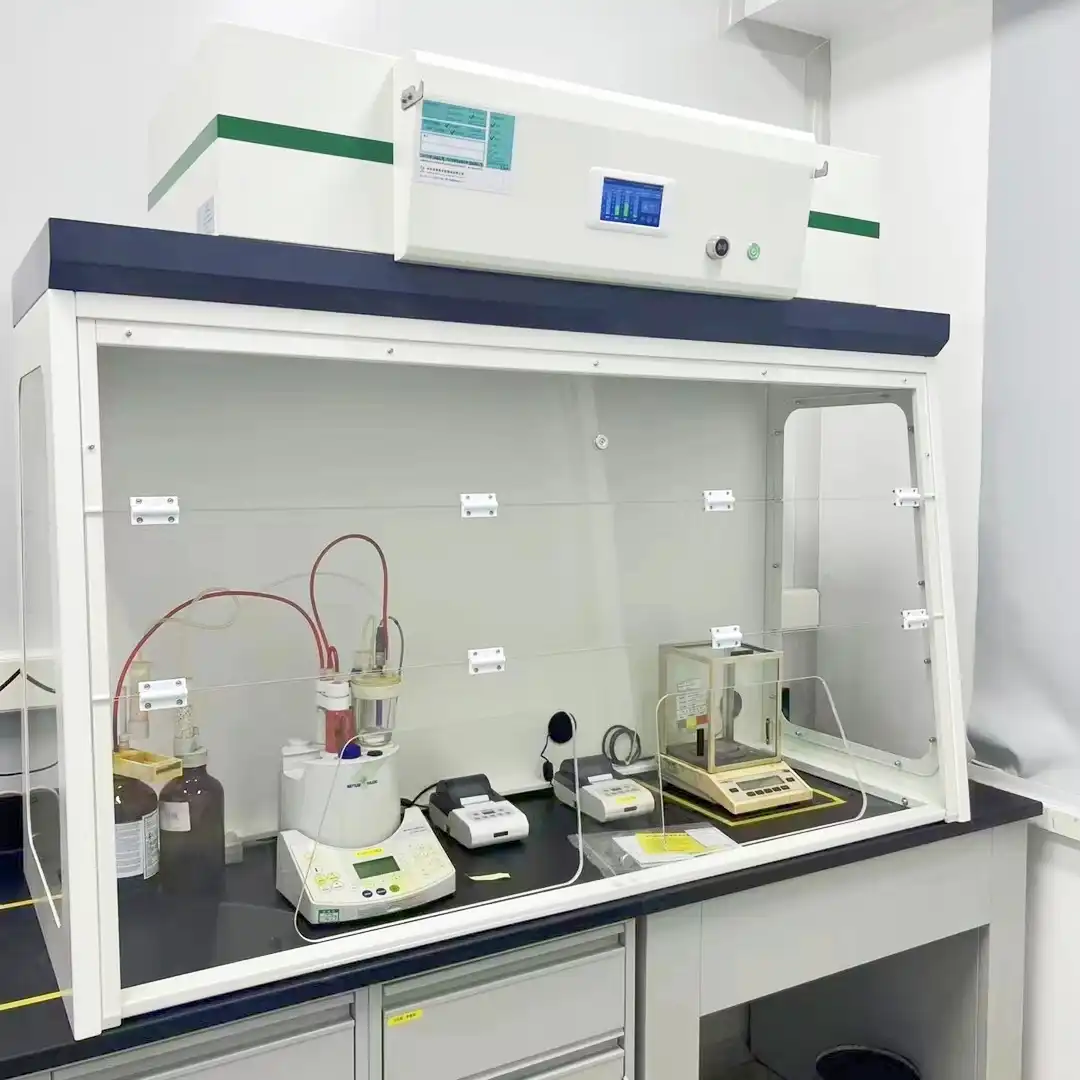
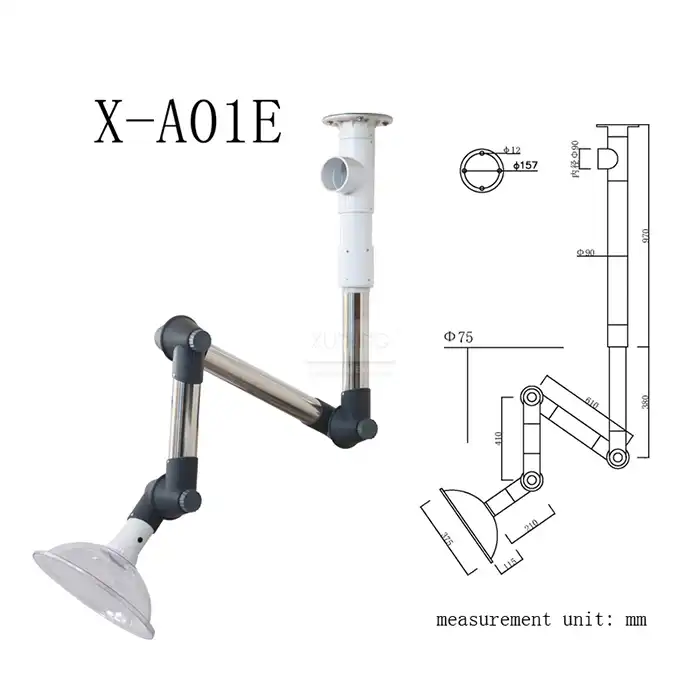
_1735469892197.webp)
